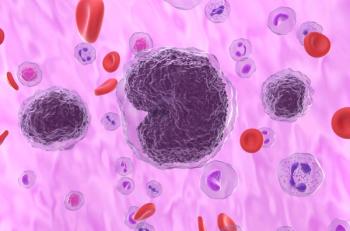
Study Identifies IVM as Potential Candidate to Promote Remyelination for MS
A recent study analyzed the role of purinergic receptor P2X4 in microglia/macrophages during autoimmune inflammation, finding that P2X4 receptors modulate microglia/macrophage inflammatory responses and identify allosteric modulator ivermectin (IVM) as a potential candidate to promote the repair of myelin damage.
Multiple sclerosis (MS) is a chronic inflammatory disease of the brain and spinal cord that attacks and destroys the myelin sheath, leading to demyelination and neurodegeneration. A recent study analyzed the role of purinergic receptor P2X4 (P2X4R) in microglia/macrophages during autoimmune inflammation, finding that P2X4Rs modulate microglia/macrophage inflammatory responses and identify allosteric modulator ivermectin (IVM) as a potential candidate to promote the repair of myelin damage.
The
“Innate immune cells contribute to axonal damage and demyelination in MS but they are also pivotal in promoting repair responses. Modulating microglia/macrophage P2X4R activation determines clinical outcome in the experimental autoimmune encephalomyelitis (EAE) model of MS,” the study stated.
The experiment was conducted using animal models of the disease, which revealed that the drugs that activate the P2X4R receptor also improve the symptoms during the chronic phase of the disease when continuing the repair of nervous tissue.
The main findings of the study, involving P2X4R included:
- Expression of P2x4r and the 2 transcription factors controlling its expression, Irf8 and Irf5, was increased in the EAE.
- EAE clinical symptoms were exacerbated by the P2X4R blockage and ameliorated by P2X4R potentiation with the IVM.
- P2X4R blockage does not interfere with the immune priming or with blood‐brain‐barrier permeability during the acute phase of EAE.
- P2X4R activation favors a switch of microglia/macrophage to an anti‐inflammatory phenotype and increases BDNF release, that promotes oligodendrocyte differentiation.
- P2X4R activation increases myelin phagocytosis and degradation at lysosomes, thus indirectly promoting remyelinating responses.
Specifically, the researchers emphasized that the P2X4R signaling by the IVM favored a switch in microglia to an antiinflammatory phenotype, potentiated myelin phagocytosis, promoted the remyelination response, and ameliorated clinical signs of EAE.
“Mechanistically, P2X4 receptor signaling potentiation in microglia/macrophages favors a switch to an anti‐inflammatory phenotype that, by secreting factors such as BDNF and increasing myelin phagocytosis, leads to higher remyelination,” explained the researchers. “Altogether, data here suggest that P2X4R upregulation could be a marker of the neuroinflammatory response in MS and that potentiation of signaling by P2X4R has therapeutic potential to treat demyelinating disorders.”
Newsletter
Stay ahead of policy, cost, and value—subscribe to AJMC for expert insights at the intersection of clinical care and health economics.













































